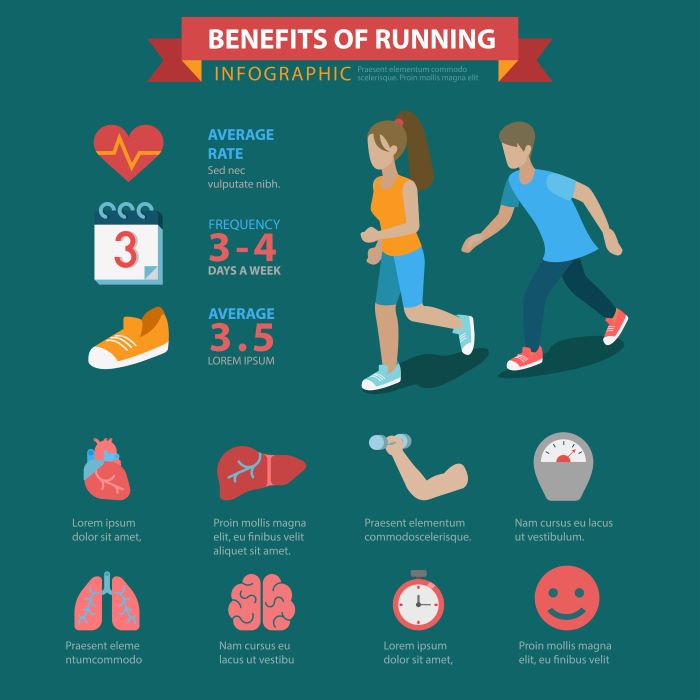Running is not just a fantastic way to stay fit; it also plays a crucial role in fat burning. Understanding the basics of how fat is utilized during running can significantly enhance your performance and results. When you engage in physical activities like running, your body primarily relies on two energy systems: the aerobic and anaerobic systems.
During aerobic exercise, which includes steady-state running, your body is able to burn fat efficiently. This process occurs when your heart rate is elevated but remains within a moderate range. The key components of fat burning during running include:
- Intensity Level: At lower intensities, approximately 60-70% of your maximum heart rate, fat becomes the primary fuel source.
- Duration: The longer you run, the more your body taps into fat reserves after depleting glycogen stores.
- Nutrition: A balanced diet rich in healthy fats can prepare your body to burn fat more effectively during runs.
To optimize your fat burning potential while running, consider incorporating a mix of long, steady runs and interval training into your workout routine. This combination not only enhances endurance but also boosts your metabolism. Interested in taking your running journey further? Visit our website to learn more and get started today! Click here.
How Running Affects Fat Distribution
When it comes to running and fat loss, an important aspect to consider is fat distribution. While running helps in burning fat, it also influences where fat is lost from your body. The effects of running on fat distribution can vary based on several factors, including genetics, gender, and the type of running you engage in.
Research indicates that running primarily reduces visceral fat, which is the fat stored around internal organs and is associated with various health risks. This type of fat is often more responsive to aerobic exercises, including running, compared to subcutaneous fat, which is located just beneath the skin. Here are some key points regarding how running affects fat distribution:
- Genetics: Your genetic makeup plays a significant role in determining where your body tends to store and lose fat. Some individuals may find that their body sheds fat from the abdomen more quickly than others.
- Gender Differences: Men and women often experience different patterns of fat loss. Men typically lose abdominal fat more readily, while women may retain fat in the hips and thighs longer.
- Running Style: The intensity and duration of your runs can also affect fat distribution. High-intensity interval training (HIIT) can lead to more significant fat loss in a shorter time, potentially influencing distribution patterns.
While running can help in redistributing fat, it’s essential to combine this exercise with a healthy diet and lifestyle for optimal results.
The Role of Intensity in Fat Burning

The intensity of your running plays a crucial role in determining the amount of fat your body burns. When you run, your body primarily relies on two types of energy systems: aerobic and anaerobic. The balance between these two systems is influenced by how hard you are pushing yourself during your runs.
Low to Moderate Intensity: At a lower intensity, such as a light jog, your body predominantly burns fat for fuel. This is because fat oxidation is more efficient at lower heart rates, allowing your body to utilize fat stores effectively. Running at this intensity for extended periods can lead to significant fat loss over time.
High Intensity: Conversely, when you increase your running intensity—like sprinting or running uphill—your body switches to glycogen (stored carbohydrates) as the primary energy source. While fat burning may decrease during these high-intensity bursts, the overall calorie burn increases significantly. This leads to a higher post-exercise oxygen consumption (EPOC), often referred to as the “afterburn effect,” where your body continues to burn calories at an elevated rate even after your workout is over.
Incorporating a mix of intensities in your running routine can be beneficial for fat loss. Here’s how you can structure your runs:
- Include steady-state runs at a moderate pace for endurance and fat oxidation.
- Implement interval training to maximize calorie burn and improve cardiovascular fitness.
- Vary your terrain to challenge different muscle groups and increase overall intensity.
By understanding the role of intensity in fat burning, you can tailor your running workouts to achieve your fitness goals more effectively.
Duration and Fat Loss: What You Need to Know

The duration of your running sessions is another critical factor that significantly impacts fat loss. While the intensity of your workouts is vital, the length of time you spend running can influence the effectiveness of fat burning in different ways.
Short Runs: Engaging in shorter runs, typically lasting around 20 to 30 minutes, can be beneficial for those just starting their running journey or with limited time. However, during these brief sessions, your body might primarily rely on glycogen stores for energy, especially if you’re running at a higher intensity. This means that while you can burn calories, the amount of fat being utilized may be less than in longer sessions.
Longer Duration Runs: Running for longer periods, ideally 45 minutes to an hour or more, allows your body to shift from using glycogen to tapping into fat stores for fuel. This shift generally occurs after about 30 minutes of continuous exercise, making longer runs more effective for fat oxidation. The extended duration not only aids in burning fat but also enhances your overall cardiovascular endurance.
To maximize fat loss through duration, consider the following strategies:
- Start with a consistent routine, gradually increasing your running duration as your fitness level improves.
- Incorporate long runs into your weekly schedule to build endurance and optimize fat burning.
- Combine shorter, high-intensity runs with longer, steady-state sessions for a balanced approach.
Understanding the relationship between duration and fat loss can help you design a running plan that aligns with your fitness goals, ensuring each step you take counts towards achieving your desired results.
Fueling Your Body for Optimal Fat Burning

To effectively burn fat while running, it’s essential to consider not just your exercise routine but also your nutrition. Fueling your body with the right nutrients can significantly enhance your performance and fat-burning potential.
Carbohydrates: While it may seem counterintuitive, carbohydrates are crucial for runners. They provide the energy needed to sustain longer runs, especially when you are aiming for extended durations that promote fat loss. Opt for complex carbohydrates like whole grains, fruits, and vegetables, which release energy slowly and keep you energized throughout your workout.
Protein: Consuming adequate protein is vital for muscle recovery and growth, particularly after intense running sessions. Incorporating lean protein sources, such as chicken, fish, legumes, and dairy, helps repair muscle tissues and can also aid in maintaining a healthy metabolism, which is essential for fat burning.
Fats: Healthy fats should not be overlooked in your diet. Including sources like avocados, nuts, and olive oil can provide the necessary energy for longer runs and improve overall health. These fats can also help reduce inflammation and enhance recovery, allowing you to run more consistently.
Hydration: Staying well-hydrated is critical for optimal performance and fat burning. Dehydration can impair your ability to exercise effectively, making it crucial to drink plenty of water before, during, and after your runs. Consider incorporating electrolyte-rich drinks if you’re running for extended periods or in hot conditions.
Ultimately, a balanced diet tailored to your running needs will support your body in burning fat more effectively. By understanding how to fuel your body properly, you can transform your running into a powerful tool for fat loss.
Incorporating Running into Your Fitness Routine

Integrating running into your overall fitness routine can be a game-changer in achieving your health and wellness goals. Whether you are a seasoned runner or just starting, finding ways to include running in your weekly schedule can enhance your fitness journey while providing numerous benefits.
Set Clear Goals: Before you begin, it’s essential to establish clear, achievable goals. Determine what you want to accomplish with your running, whether it’s improving your endurance, losing weight, or simply enjoying the outdoors. Setting realistic milestones can help keep you motivated.
Mix It Up: To prevent monotony and overuse injuries, vary your running routine. Incorporate different types of runs into your week, such as:
- Long Runs: Build endurance with weekly long runs at a comfortable pace.
- Interval Training: Enhance speed and fat-burning by alternating between high-intensity bursts and recovery periods.
- Recovery Runs: Easy-paced runs can help promote recovery while still logging miles.
Cross-Training: Complement your running with other forms of exercise such as strength training, cycling, or swimming. These activities can improve your overall fitness, reduce the risk of injury, and provide a well-rounded workout routine.
Listen to Your Body: It’s crucial to pay attention to how your body responds to running. Rest days are just as important as training days to allow your muscles to recover and prevent burnout. If you feel any discomfort, don’t hesitate to modify your routine accordingly.
By incorporating running into your fitness routine thoughtfully, you can create a sustainable and enjoyable workout plan. Visit our website to learn more and get started today! Click here.


